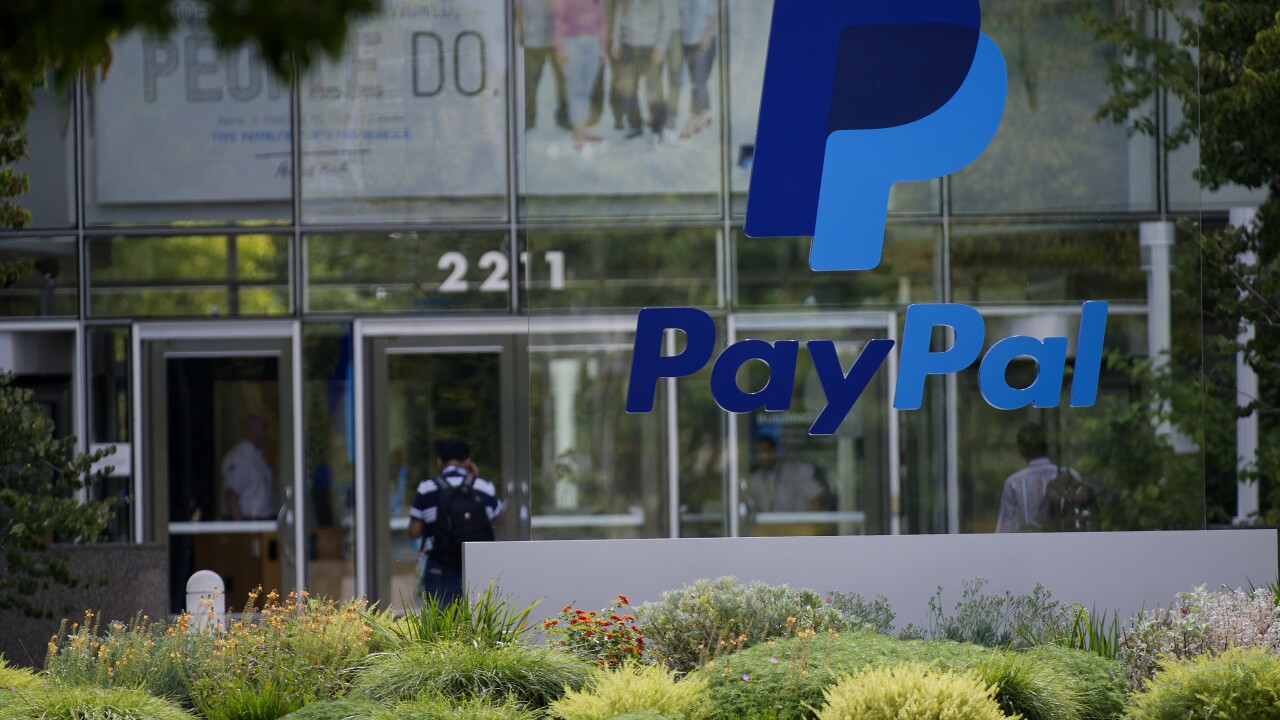Stablecoins
How are banks approaching dollar-backed digital assets (stablecoins)?
Stablecoins have moved from the edge of the
Banks are testing stablecoins for cross-border payments, liquidity management, and digital wallets. Some are also exploring how stablecoins can support interbank transactions or be issued directly by regulated institutions. As the landscape takes shape, stablecoins are starting to look less like an experiment and more like infrastructure.
-
Sam Bankman-Fried was convicted of a massive fraud that led to the collapse of his FTX exchange, following a monthlong trial.
November 2 -
The subpoena asks the company to produce documents tied to its work on the dollar-linked stablecoin PayPal USD. The company says in a regulatory filing that it's cooperating with the probe.
November 2 -
The U.K.'s Financial Conduct Authority released data that shows buy now/pay later lending on the rise, Ripple is working with Uphold to improve crypto liquidity and more.
November 1 -
The group, which is led by Rep. Andy Barr, R-Ky., and includes two high-ranking Democrats on the House Financial Services Committee, says the Securities and Exchange Commission's crypto-custody proposal could encroach on banking regulators' jurisdiction.
November 1 -
In a lawsuit between a Puerto Rican bank and the New York Fed, a federal judge ruled that reserve banks are not obligated to give master accounts to banks they deem risky. The decision could have implications for other master account challenges.
October 31 -
Almost a year since FTX's implosion set a minor banking crisis in motion, neither Congress nor regulators seem to be anywhere close to issuing comprehensive rules for the crypto road. That's a missed opportunity, and states are likely to fill the void.
October 31 American Banker
American Banker -
The U.K. government confirmed plans to regulate cryptoasset activities more strictly, bringing them under the same regime as traditional financial services.
October 30
The first three months of the year coincide with the start of President Donald Trump's second term in office. Investors are likely to be more interested in banks' outlooks amid swings in tariff policy than the first-quarter results.
Frequently Asked Questions:
How are banks approaching dollar-backed digital assets (stablecoins)?
Stablecoins have moved from the edge of the crypto, world to the center of policy and banking conversations. As regulators and banks weigh their role in payments, settlement, and reserves, this page follows the developments — from early pilots to proposed legislation.
Banks are testing stablecoins for cross-border payments, liquidity management, and digital wallets. Some are also exploring how stablecoins can support interbank transactions or be issued directly by regulated institutions. As the landscape takes shape, stablecoins are starting to look less like an experiment and more like infrastructure.
Why are banks paying attention to stablecoins?
Stablecoins are increasingly viewed as a potential upgrade to legacy payments systems. Banks are evaluating them for settlement, remittances, cross-border transactions, and tokenized deposit models.Are banks issuing their own stablecoins?
Some are exploring the option. Institutions like JPMorgan (with JPM Coin) and new entrants like PayPal are piloting bank-issued stablecoins, while others are watching regulatory developments before moving forward.How do stablecoins impact compliance and risk?
Issues include KYC/AML enforcement, cybersecurity, operational risk, and how reserve assets are held and reported. Banks exploring stablecoin activity must weigh both technological benefits and regulatory scrutiny.How are regulators responding to stablecoin innovation?
Congress is debating stablecoin-specific bills focused on reserve backing, issuer licensing, and oversight. The Federal Reserve, OCC, and state regulators are also shaping how bank involvement in stablecoin activity is supervised.How are banks using stablecoin?
Banks are using stablecoins to speed up cross-border payments, manage liquidity across global branches in real time, and test new forms of settlement between institutions. Some are integrating stablecoins into retail-facing digital wallets, while others are exploring interbank networks built on tokenized payments. These efforts are less about crypto speculation and more about making money move faster, with greater transparency and fewer intermediaries.- Real-time cross-border payments
- Internal liquidity management
- Retail-facing digital wallets
- Interbank tokenized payment networks
Top banks investing in stablecoin
List of institutions with greatest investment in stablecoin:- JPMorgan Chase – JPM Coin
- Custodia Bank – Avit Tokens
- Citigroup - Citi Token Services
- Societe Generale - USD CoinVertible
- Bank of America - Name yet to be released
- Fifth Third - Name yet to be released
- U.S. Bancorp - Name yet to be released









